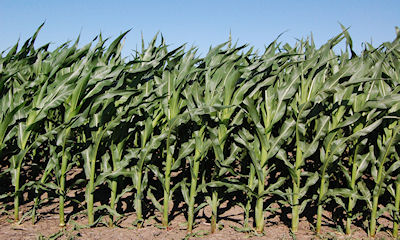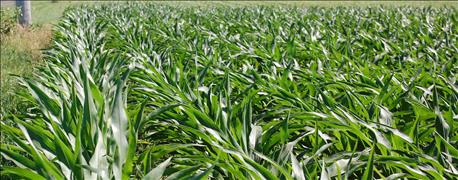

TIGHT MARGINS: Total cost of production for corn and soybeans in Iowa are expected to fall, respectively, by 6% and 2.5% in 2016, compared to 2015. This year’s low grain prices outweigh the decline in fixed and variable costs.
The total cost of producing corn and soybeans in Iowa is expected to fall this year, according to estimates compiled by Alejandro Plastina, an Iowa State University Extension economist.
He authored the newly released annual report “Estimated Costs of Crop Production in Iowa – 2016.” It shows the cost of corn production dipping by 6% and soybean production falling by 2.5% this year. The full report is available online on the ISU Extension and Outreach Store.
Total cost per bushel is projected at $4.63 for corn following corn, assuming an average yield of 165 bushels per acre, and $3.99 for corn following soybeans, assuming an average yield of 180 bushels per acre. The total cost per bushel of soybeans, assuming an average yield of 50 bushels per acre, is projected at $10.67 for the herbicide tolerant variety and $10.66 for non-herbicide-tolerant, according to the report.
Why gross crop margins remain negative, despite lower costs
“A substantial decline in fertilizer and lime prices, machinery costs and land rents are expected to more than offset increases in crop protection costs, especially herbicides,” Plastina says. “Labor costs are also projected to remain flat in 2016.”
Despite higher fixed costs associated with slightly higher interest rates, total machinery costs are projected to drop due to lower diesel and LP gas prices. Lower crop prices will result in lower crop insurance liabilities and therefore lower insurance premiums.
The accumulated declines in total costs of corn and soybean production amount, respectively, to 8% since 2013 and 4% since 2014. However, these cost reductions are dwarfed by the 47% and 37% reduction in corn and soybean prices, respectively, between 2012 and 2015.
Keep these factors in mind when comparing cost of production
Several caveats do apply to these ISU projections, Plastina explains. First, fertilizer and lime costs include volume and early purchase discounts. Second, producers paying land rents higher than the ones estimated in the report might face higher costs of production. Third, to be able to compare budgets through time, calculations are based on a fixed rate of input use.
~~~PAGE_BREAK_HERE~~~
This might be a strong assumption for 2016, when lower crop prices will likely push some producers to look for additional cost savings by changing the mix of inputs used. For example, some producers might opt for seeds with fewer traits than in other years to save on front-loaded input costs.
Finally, keep in mind that ISU crop budgets are calculated assuming average yields remain constant through time. If El Niño impacts climatological conditions in 2016, there is a high chance of having higher than average yields. In that case, costs of production per bushel might be lower than reported.
Be careful cutting costs; you don’t want to hurt yield potential
“Thin profit margins in owned land and likely negative margins on rented land should warrant a discussion with a trusted agronomist to evaluate where to cut costs without hurting revenue potential,” Plastina says. “Knowing the cost per acre of your own operation is critical for marketing your crop and making the necessary arrangements (such as securing operating loans, restructuring machinery or real estate loans, adding non-farm income) to cash flow your operation. For more information, visit with your ISU Extension and Outreach field agronomist or farm management specialist.”
About the Author(s)
You May Also Like




